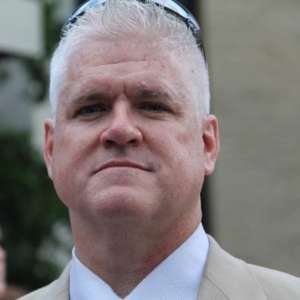

Sean Torpey, the acting deputy assistant administrator for Information and Technology and acting chief information officer for the FAA, said the agency is swinging...
But unlike many agencies, the FAA isn’t just talking about this need to save money and reinvest those savings. It’s actually saving tens of millions of dollars and giving it back to the mission areas.
Sean Torpey, the acting deputy assistant administrator for Information and Technology and acting chief information officer for the FAA, said the agency is swinging the spending pendulum from legacy IT to newer systems.
“We did that with our wireless implementation and with other requirements that have gone up so we haven’t gone back to our appropriators for more money. We’ve actually been really efficient on our dime and spending the money as best we can,” Torpey said on Ask the CIO. “We are big believer in shared services. It works. We consolidated help desks. We went from seven to two, and now we are down to one. We did the same thing with email. We did the same thing with our networks, and we gained efficiencies and savings through licensing and all these other things, and we were able kick that back into the agency to support mission.”

During the first year of using shared services for email and other capabilities, Torpey said the FAA saved or avoided spending $36 million.
“That was a big win for us,” he said. “Our infrastructure and operations budget we were able to cut operations by 40 percent one year and that was able to be kicked back into implementing a wireless and WiFi solution around the country. For our stakeholders who are aviation safety inspectors or any FAA employees can go to any of the 1,033 facilities and have WiFi access. We’ve been able to really gain efficiencies and work it from that perspective.”
Torpey credited the FAA’s leadership for supporting this efficiency and reinvestment effort, especially as the budget tightening increased over the last few years.
One of the approaches FAA is using to modernize its IT systems is the U.S. Digital Service’s playbook. Torpey said the FAA used the playbook to develop the drone registration program.
“We were able to think innovatively and come up with some really cost effective ways to solving these types of problems,” he said. “We used the cloud and agile development methodologies with stakeholder engagement to meet tight deadlines. We involved them in all aspects of the UAS registration effort.”
Torpey said the reason the drone registration platform worked so well is the agency started from scratch. While that option is not available for the legacy IT systems, he said the FAA will follow many of the same principles for modernization efforts, starting with the cloud.
FAA awarded a long-term cloud contract about two years ago and expect to finalize the authorities to operate for its infrastructure-as-a-service (IaaS) government community cloud this summer.
“It gives us the opportunity for provisioning through a broker model that takes advantage of two of the major service providers that are out there,” Torpey said. “We have an integrator that sits in front of that and who helps execute from a broker perspective. There is a lot of flexibility there.”
He added the FAA also is starting to look at how it could implement platform-as-a-service (PaaS) and software-as-a-service (SaaS) through the broker model.
“We are at beginning of it and it will start getting a lot more momentum as we begin moving workloads in there,” Torpey said. “It also will give us time to do the hard job of rationalizing our portfolio and deciding what bring to the cloud and what makes sense.”
Torpey said another major priority is a bandwidth modernization effort to upgrade the facilities to take advantage of new collaboration technologies.
Of the 1,033 national air space facilities, the FAA plans to upgrade about 600 of those sites in the coming years. Torpey said more than 50 percent of the workforce will see increased bandwidth opening the door to better tools that couldn’t have happened because the network was saturated.
“We’ve looked at which sites are ‘hurting’ the most and making sure we cover those sites. We also looked at the number of people at our facilities, regional offices and our large centers, and we make sure we are upgrading those so we are affecting the largest number of employees.”
The FAA also is “knee deep” into the continuous diagnostics and mitigation (CDM) implementation. Torpey said CDM and other tools will help the FAA evolve to a more proactive approach to cybersecurity.
“We are on the cusp of making the switchover on the CDM site and take advantage of the tools to be more proactive,” he said. “We will be more on the hunting aspect of the cybersecurity threat model versus waiting for an attack to hit us.”
Copyright © 2025 Federal News Network. All rights reserved. This website is not intended for users located within the European Economic Area.
Jason Miller is executive editor of Federal News Network and directs news coverage on the people, policy and programs of the federal government.
Follow @jmillerWFED


